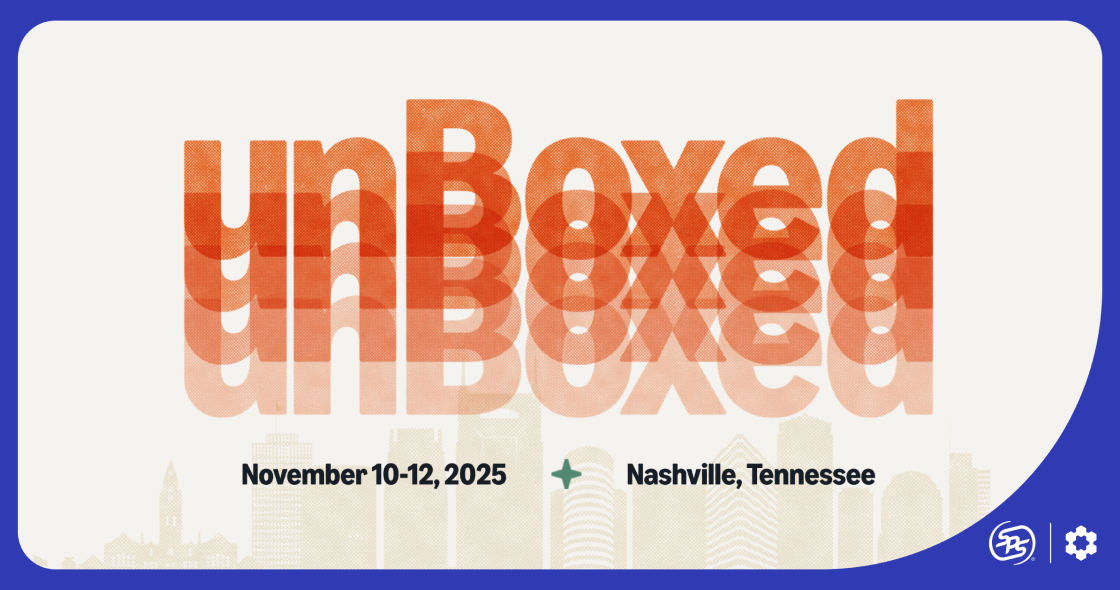Listen to This Article
What Amazon Vendors & Sellers Need to Know This Week
Amazon news this month includes policy changes and dashboard upgrades that you should review carefully before the busy shopping period begins.
- Vendor Central shortage disputes and product prep updates: Amazon shortage claims are now limited to invoices from the past 2 years (North America only), with older disputes automatically rejected. In other news, the upgraded Product Prep dashboard lets you dispute prep instructions and reassign prep responsibility.
- New damaged inventory and product variation policies: Amazon just introduced a new FBA damaged inventory ownership policy: stick with the default (get reimbursed, Amazon resells) or keep control yourself (no reimbursement). Amazon’s also removing unused variation themes starting September 2, potentially requiring listing rebuilds and risking false abuse flags.
- 2025 holiday season preparation: Amazon expects record Q4 sales with Prime Big Deal Days and Black Friday/Cyber Monday. Deal submissions are open for Best Deals, Lightning Deals, PEDs, and Coupons, with corresponding discount requirements and fees.
Amazon Vendor News: Tightened Shortage Claim Rules and Revamped Prep Dashboard
Amazon introduced two Vendor Central changes: one limits shortage claim timeframes, while the other improves product prep visibility, reflecting stricter compliance focus.
Shortage Disputes Now Limited to 2 Years
Vendors can no longer file disputes or re-disputes for invoices older than two years, even though Vendor Central still shows seven years of data. Any Purchase Quantity Variance (PQV) or Purchase Price Variance (PPV) claims outside that window will be automatically rejected. Initially introduced in North America, this update is beginning to surface in additional regions, though Amazon has not yet provided a full rollout timeline.
Settlements (re-disputes) now generally require an AVS/Vendor Manager to be assigned to the account and submitted via the Amazon Vendor Manager. There are also some cases where Amazon directly engages the client via email and submits a settlement for them through the Global Strategic Program (GSP).
This change raises the stakes for vendors who haven’t automated their recovery process. Missing a reimbursement window can quickly add up to significant losses, especially for high-volume accounts.
Carbon6 anticipated this move, and its revenue recovery software now ensures:
- Proactive automation to trigger disputes as soon as they’re eligible.
- Re-dipsute expertise to maximize recoveries even with stricter Amazon Vendor Services/Vendor Manager oversight.
- Escalation workflows that keep valid claims from slipping through the cracks.
- Ongoing monitoring to alert vendors to new policy rollouts before they take effect.
Product and Prep Packaging Update
Alongside the dispute policy change, Amazon has updated its Product Prep and Packaging dashboard with a new prep acknowledgement interface. Vendors now have the ability to:
- Dispute prep instructions at the product level, addressing the root cause of repeated chargebacks.
- Reassign prep ownership between Amazon and vendors after acknowledgement, creating clearer accountability and helping prevent future disputes.
This update streamlines prep processes while giving vendors more control over costs and responsibilities. For those who’ve faced recurring prep-related chargebacks, this could mean fewer disputes down the line and improved margins.
Amazon’s latest vendor updates may feel like added pressure, but they also offer you a chance to build more efficient, resilient systems. Those who embrace automation and make smart use of the new prep tools will be better positioned to protect revenue and maintain profitability.
FBA Damaged Inventory Ownership Policy & Variation Theme Cleanup
Amazon announced two updates changing how sellers manage damaged inventory and product listings, forcing sellers to face new trade-offs and control opportunities.
Damaged Inventory Ownership: More Control, Less Cash Flow?
Amazon’s new FBA Damaged Inventory Ownership policy changes how sellers handle products the company damages in its warehouses.
In the past, Amazon automatically reimbursed sellers for Amazon-fault damaged items and then took ownership of those goods. That meant many “damaged” products resurfaced on Amazon Warehouse or liquidation channels, sometimes undercutting your pricing.
Now, sellers can opt out of FBA reimbursements and instead keep control of those damaged goods. That inventory moves into your Amazon unfulfillable inventory, where you can decide whether to remove, resell, or recover it yourself.
Amazon expert Vanessa Hung breaks it down: this is a strategic decision.
- Stick with the default reimbursement model, which means fast cash flow, but risk losing control as Amazon liquidates your goods in ways you can’t influence.
- Choose the control model (opt out). Keep inventory recovery in your hands, protect brand positioning, but give up reimbursement payments.
Suppose you’re selling premium electronics and don’t want slightly scuffed but functional units showing up at half-price in Amazon Warehouse, opting out could help protect your margins, even if it means extra work to recover those items.
Amazon Variation Themes Cleanup: Fewer Options, More Headaches
Starting September 2, 2025, Amazon will begin removing less-used variation themes from product templates, wrapping up by November 30, 2025. Impacted themes are already marked as “Deprecated: Do Not Use.”
- If you try to update a listing tied to a deprecated theme, you’ll get an error message and the update won’t go through.
- Amazon’s official fix? Delete your parent ASIN, strip attributes from the child ASINs, and rebuild under an approved theme.
Amazon believes this may help simplify the listing creation process, but for many sellers, the execution risks disrupting live listings and revenue streams.
- One seller warns that deleting and rebuilding parents can trigger variation abuse flags, leading to lost sales and time wasted.
- Others point out that removing themes like “size” or “style” for certain categories leaves certain products harder to categorize, which ironically creates more confusion, which is the very thing Amazon claims it’s trying to solve.
- A practical workaround, according to one seller: use beta flat files to check which themes will survive. But beware, submitting changes through these beta files often leads to error loops.
Amazon Holiday 2025: Prime Big Deal Days, Black Friday, and What Sellers Need to Know
With Prime Big Deal Days, Black Friday, and Cyber Monday on the horizon, sellers have huge opportunities and new requirements.
What’s New for Prime Big Deal Days (PBDD)?
Amazon is positioning Prime Big Deal Days as a second Prime Day, giving sellers an extra chance to tap into millions of deal-hungry customers before Black Friday.
- When: Amazon deal submissions for PBDD are already open until August 21, 2025.
- Why it matters: This event has become a holiday season kickoff, helping sellers capture early demand and boost rankings before the November rush.
- Tip for newer sellers: Think of it as your warm-up event, with the right promotions, you can build momentum heading into Black Friday/Cyber Monday (BFCM).
Promotional Options (and Their Costs)
Amazon has laid out four major promotion types for sellers to consider:
| Promotion Type | Discount Requirement | Cost | Submission Deadlines | Key Advantage |
| Best Deals | 15% minimum (30%+ for additional merchandising during the sales events) | $1,000 flat fee | – PBDD: Open, closes Sept. 12, 2025 – BFCM Week: Open, closes Oct. 28, 2025 | Top placement on deals page and homepage. |
| Lightning Deals | 20% minimum | $500 flat fee | – PBDD: Open, closes Sept. 12, 2025 – BFCM Week: Open, closes Oct. 28, 2025 | 12-hour exposure with high traffic |
| Prime Exclusive Discounts (PEDs) | 15% minimum | $100 (PBDD), $245 (BFCM) | – PBDD: Open – BFCM Week: Opens Sept. 10, 2025 | Event badging in search, product pages, and carts. |
| Coupons | 5% minimum | $5 per coupon + 2.5% of sales | To Be Announced | Automated merchandising across pages |
For instance, if you’re selling a mid-priced home gadget, a Lightning Deal could create urgency, while a PED helps reinforce Prime loyalty at a lower cost.
Use our Promo Fee Calculator to compare old vs. new fees and test scenarios to optimize your strategy based on Amazon’s new performance-based cost.
Amazon Holiday Inventory Deadlines: Don’t Miss the Cutoff
Amazon has narrowed its delivery window requirements to better manage holiday volume. Missing the window could mean delayed receiving and missed sales.
Prime Big Deal Days
- Amazon Warehousing & Distribution (AWD): Aug. 29
- FBA (minimal splits; single or minimal inbound locations): Sept. 10
- FBA (optimized splits; multiple inbound locations): Sept. 19
Black Friday/Cyber Monday Week
- AWD: Oct. 9
- FBA (minimal splits): Oct. 20
- FBA (optimized splits): Oct. 30
Shipments arriving within the scheduled 7-day delivery window will get priority processing. Anything late may face bottlenecks.
Holiday Peak Fees (Plan Ahead)
From Oct 15, 2025 to Jan 14, 2026, Amazon’s holiday peak fulfillment fees ($3.25 to $203.46+ per unit) kick in across FBA, Remote Fulfillment, MCF, and Buy with Prime. The good news? Rates are the same as last year. Be sure to review your costs in the Revenue Calculator or watch our FBA fees webinar to plan margins more accurately.
Other Seller Updates This Week
1. Amazon Updates Percentage-Off Promotions
Starting September 2, percentage-off promos without claim codes will require at least two units. Single-unit discounts now need a claim code or coupon.
2. Amazon Business Hits 8 Million Organizations
Now serving 8M organizations worldwide, Amazon Business hit $35B in sales and boosted small business selection by nearly 80% YoY.
3. Walmart Courts Chinese Sellers With Fee-Free Q4 Storage
At its Global E-Commerce Summit in Shenzhen, Walmart announced that Walmart Fulfillment Services (WFS) will waive all peak-season storage surcharges for Chinese sellers through January 31, 2026. Paired with delivery fee discounts, ad credits, and logistics perks, the offer positions Walmart as a lower-cost alternative to Amazon, especially during the expensive Q4 season when Amazon’s storage fees typically surge.
4. Walmart vs. Target Earnings Show Divergence
According to a report by Zacks Investment Research, Walmart stays strong with steady grocery-driven growth, while Target struggles with weaker discretionary sales despite digital gains. Inventors and sellers will be watching to see if Target can turn around or if Walmart stays ahead.
Making Amazon’s Rules Work for You
This week’s updates make one thing clear: profitability now hinges on compliance and control. To stay ahead, prioritize automating your shortage claims, auditing your variation themes before the deadline, and strategically planning your holiday promotions and inventory shipments now.








